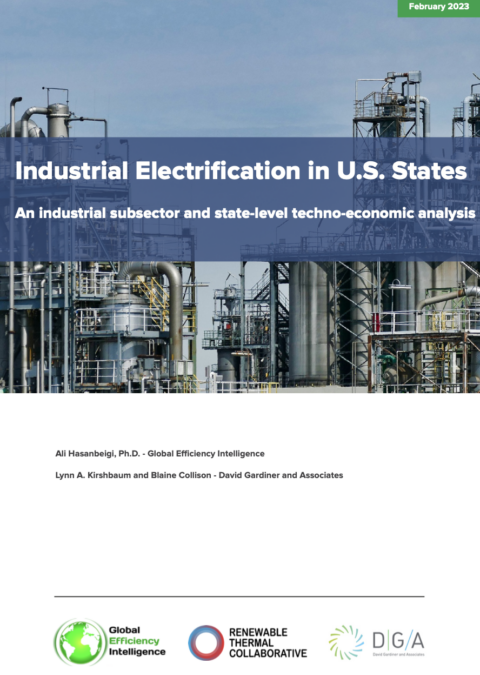Meeting the United States’ goals of reducing carbon emissions 50-52% by 2035 requires a concentrated effort to develop and deploy clean technologies across sectors. The country’s industrial sector poses a serious challenge: while the share of renewable energy used to generate electricity continues to grow, so does the use of thermal energy to produce heat. Previous analyses, including the Renewable Thermal Vision Report, have identified an opportunity to reduce thermal emissions through electrification, leveraging the rise of renewable electricity to power industrial processes.
In a new report for the Renewable Thermal Collaborative, DGA and Global Efficiency Intelligence (GEI) analyze a handful of industries and the impact electrification would have on their energy use, emissions, and energy costs. The report builds on findings from a previous GEI and DGA publication, Electrifying U.S. Industry. However, because industrial facilities, policy, and renewable energy resources vary across geographies, this study takes a state-by-state approach, zeroing in on 20 states using large amounts of industrial energy. It identifies specific technologies which can electrify processes in the studied industries, including direct electrification and indirect electrification using hydrogen, and describes the impacts and benefits of deploying these technologies. The report makes six recommendations for policymakers looking to electrify their state’s industrial heat use: supporting emerging technologies, using financial incentives, increasing renewable electricity generation, enhancing the grid, engaging communities, and growing the workforce.
Learn more and view the report:
